This post may contain affiliate links. Learn more.
Here’s how to make miso soup (with mushrooms and spinach, if you like) quickly and easily at home. It’s nutritious, soul-warming comfort food at its best.
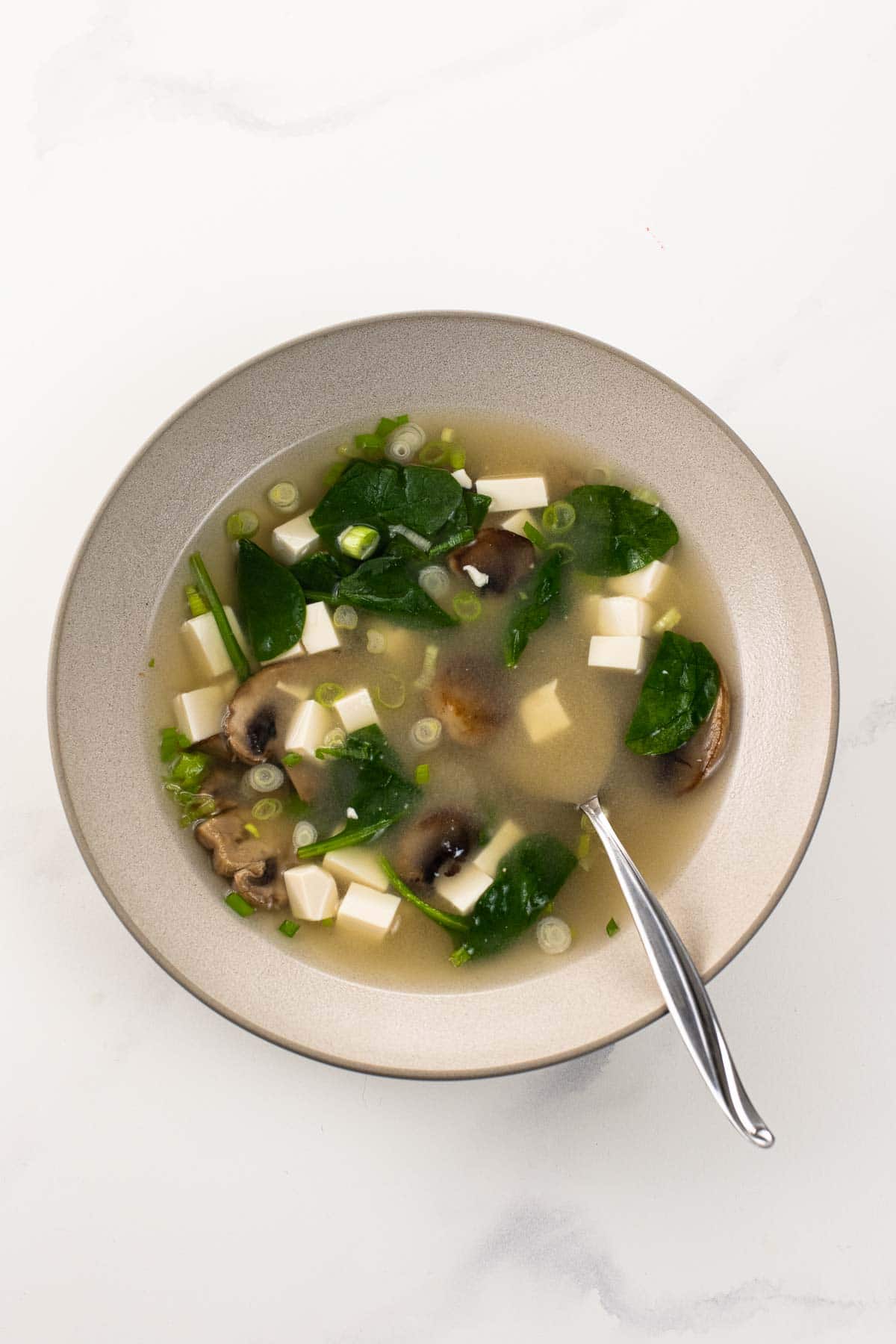
Why we love this recipe
Miso soup deserves a place in every umami-lover’s repertoire. It’s a wholesome, holistic take on comfort, one that soothes both with its deep, rich flavors and with its obvious nutritive benefits. The process is very simple, and the results are very good.
Our version begins by hewing reasonably closely to tradition, by:
- Starting with a basic dashi, a simple broth of simmered kombu (an umami superstar among dried sea vegetables) and dried bonito flakes
- Adding a heaping spoonful of miso paste, some diced silken tofu, and sliced scallions
After that, you can decide whether to keep it simple or add ingredients to your heart’s content. I often add mushrooms and swap in baby spinach for the traditional wakame, so that’s what I’ve shared here. But you can add other starches, proteins, and vegetables too. Refer to the FAQ section below for guidance.
I first published this recipe here way back in 2010. I’ve updated the post for clarity, but the recipe remains the same.
What you’ll need
Here’s a glance at the ingredients you’ll need to make this recipe. You can buy them all at a local Asian grocery if you have one nearby, at Whole Foods, or through the Amazon affiliate links below.
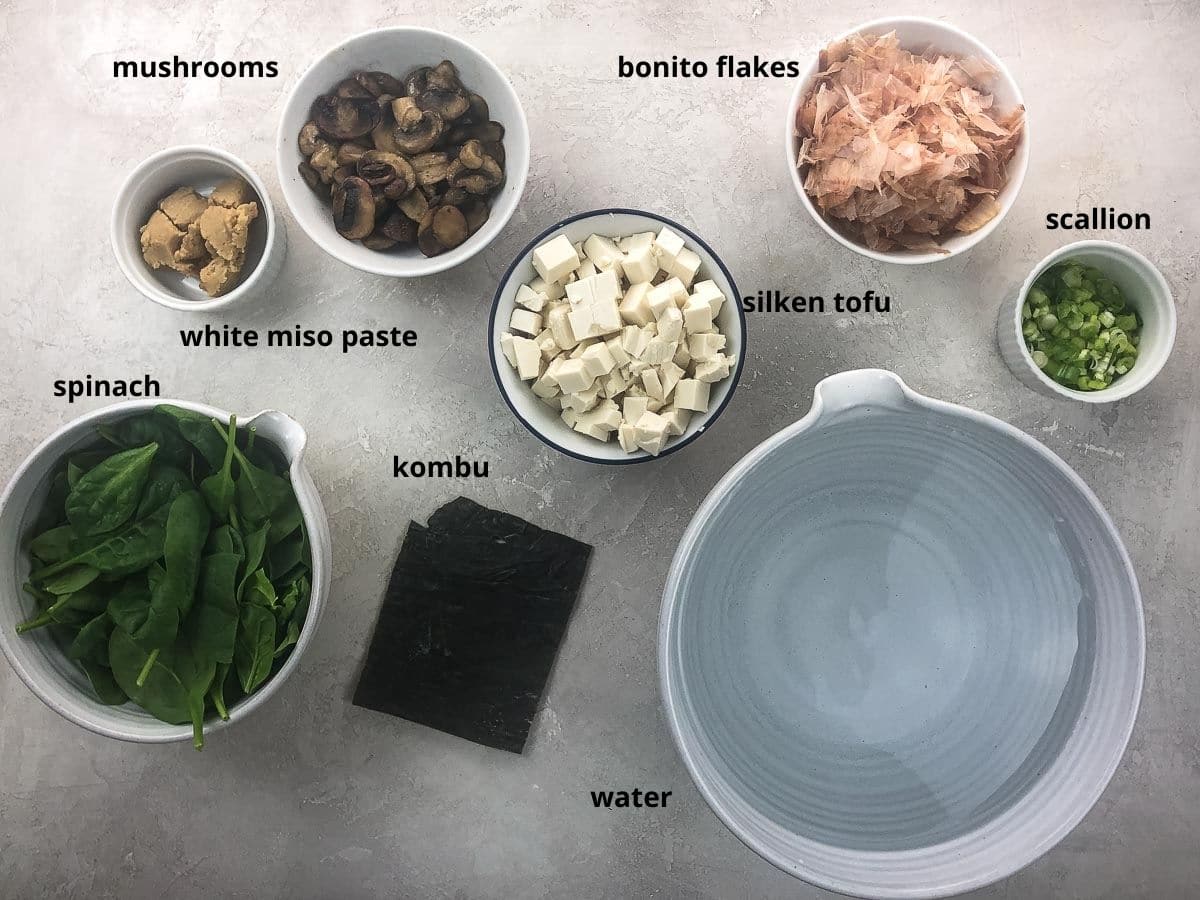
- Kombu is kelp, a type of seaweed. It’s jam-packed with umami and helps create a savory base for your miso soup. It comes dried and lasts for a long time. Buy it here.
- Bonito flakes are dried, smoked skipjack tuna. They impart a deep, smoky savoriness to miso soup. Buy them here.
- White miso paste is made from fermented soybeans. It has a salty, sweet, and savory vibe and is among the most mellow of the miso varieties. Buy it here.
- Silken tofu has a tender, more fragile texture than its “regular” counterpart. I like to use firm silken tofu since it’s reasonably easy to dice without having it all apart. Buy it here.
How to make it
Here’s what you’ll do to make a comforting, nourishing pot of miso soup (with mushrooms and spinach, if you like). You can see the steps in action in the video that accompanies this post, and get all the details in the recipe card below.
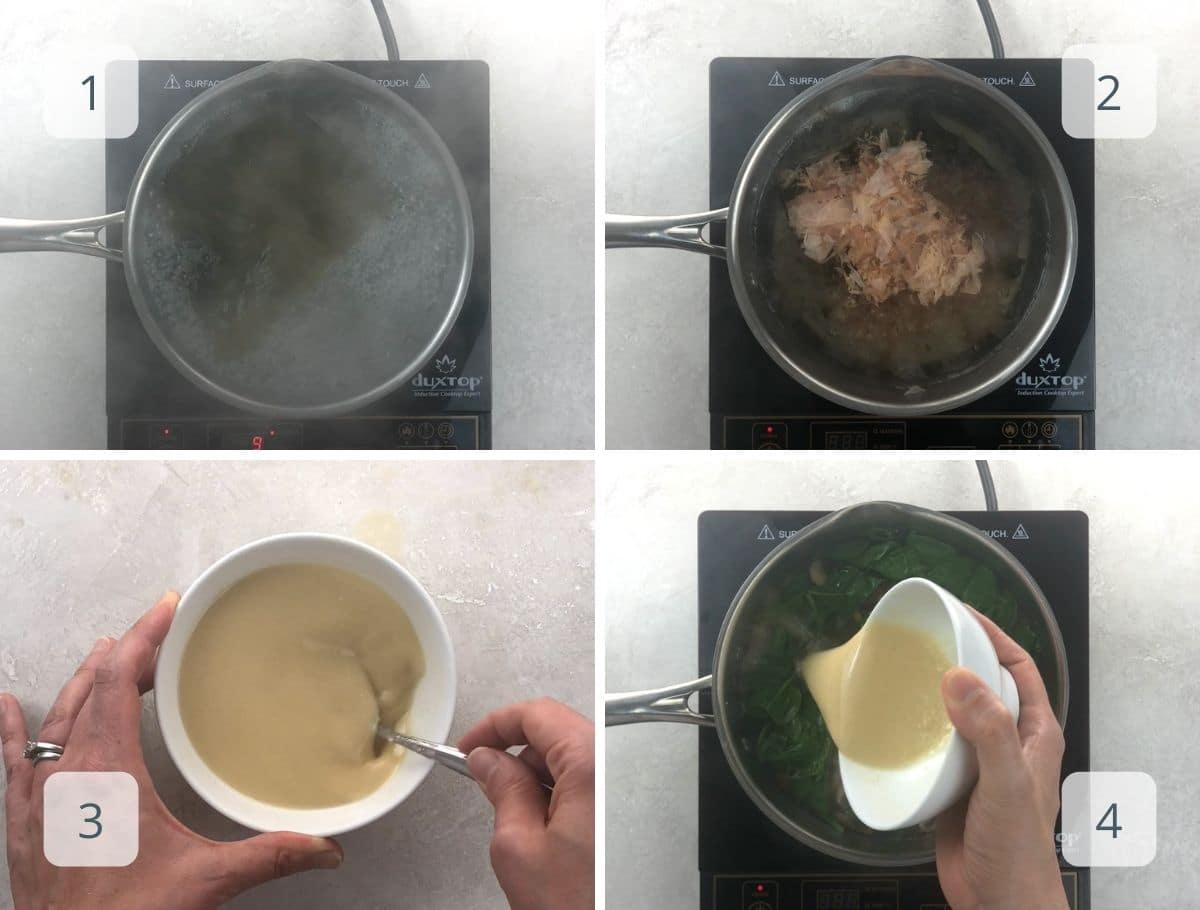
- First, you’ll make the dashi — a clear, umami-powerhouse broth. Place the kombu and water into a pot, bring to a simmer but not a full boil, then lower the heat and simmer gently for 10 minutes.
- Off the heat, add the bonito flakes and steep for 10 minutes, then strain.
- Mix a bit of the hot dashi with the miso paste until smooth.
- Pour the rest of the dashi back into a clean pot. Add tofu, mushrooms, and spinach, and warm through. Off the heat, stir in the miso and scallions. That’s it!
Expert tips and FAQs
Yes! The only ingredient you’ll need to change is the bonito flakes. Leave them out, and instead add five whole dried shiitake mushrooms in the first step along with the kombu and water. Strain them out before serving. Some people like to slice dried shiitakes and eat them, but I find them too rubbery. You’re welcome to add them to the final soup if you like.
This soup is very versatile. You can add a wide variety of vegetables, from thinly sliced bell pepper to snow or snap peas to shredded cabbage and beyond. You can add protein, from shrimp to cooked shredded chicken. And you can add cooked rice, ramen noodles, or rice noodles.
Starchy ingredients and longer-cooking proteins should be cooked before adding. Vegetables and flash-cooking proteins like shrimp can be added raw along with the mushrooms and simmered for a few minutes, just until done.
You can definitely make the dashi up to a few days in advance and store it in the fridge.
If you make the whole soup in advance, it will keep just fine for a few days, but make sure to reheat it gently, without boiling, so you won’t lose the nutritive benefits of the miso. (Miso contains live, active cultures that won’t survive very high temperatures — though it will still taste fabulous.)
Leftovers will keep for a few days in an airtight container in the fridge. Reheat gently before serving.
Creator spotlight
As an umami devotee, I love cooking and sharing Japanese-inspired dishes with you. But I also want to yield the spotlight to creators with Japanese heritage. In the past couple of years I’ve been enjoying the work of Sara Kiyo Popowa at Shiso Delicious and Namiko Hirasawa Chen at Just One Cookbook. If you don’t know their work already, please check it out. I think you’ll love it too.
More favorite Japanese-inspired recipes
- Vegetarian ramen with rich, savory broth
- Spicy salmon roll
- Sushi rice
- Charred shishito peppers
- Spicy mayo
- Ramen eggs
- Chili-salted edamame
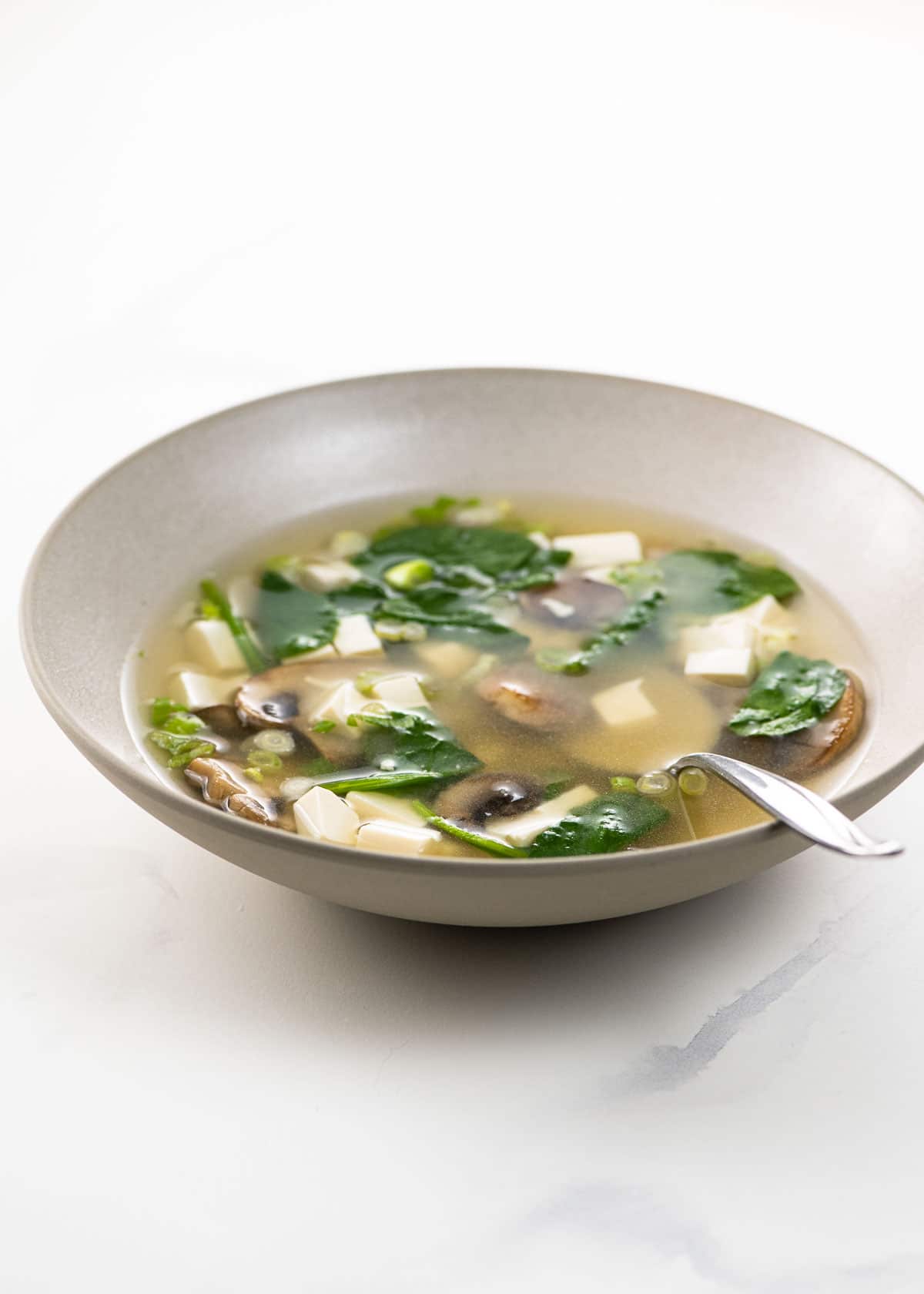
Hungry for more?
Subscribe to Umami Girl’s email updates, and follow along on Instagram.

Miso Soup with Mushrooms and Spinach
Ingredients
- 1 5- inch-square piece kombu
- 8 cups 1(900 ml) cold water
- 1 cup (5 grams) bonito flakes
- ¼ cup (60 grams) white (shiro) miso
- 8 ounces (277 grams) button mushrooms, sliced
- 12 ounces (350 grams) firm or extra-firm silken tofu, diced
- 3 ounces (85 grams) baby spinach
- ¼ cup sliced scallions
Instructions
Make the dashi
- Place the kombu into a medium-sized pot. You don’t need to rinse it, even if the package says you do. Pour in the water.
- Bring the water to a fairly brisk simmer, but not a full boil. Then turn down the heat and let it simmer very gently for 10 minutes.
- Turn off the heat and add the bonito flakes. Let steep for 10 minutes.
- Strain the broth through a fine-mesh sieve into a clean pot.
Make the miso soup
- Return strained broth to a low simmer. Ladle out about a half cup of the broth into a small bowl and whisk in the miso paste until smooth. Set aside for a moment.
- Add mushrooms and simmer until cooked to your liking, about 5 minutes.
- Add the diced tofu and the spinach and simmer for. a minute or so, until the spinach wilts.
- Off the heat, pour the miso mixture and the scallions into the pot and stir to combine.
- Ladle into bowls and serve.
Notes
- Kombu is kelp, a type of seaweed. It’s jam-packed with umami and helps create a savory base for your miso soup. It comes dried and lasts for a long time.
- Bonito flakes are dried, smoked skipjack tuna. They impart a deep, smoky savoriness to miso soup.
- White miso paste is made from fermented soybeans. It has a salty, sweet, and savory vibe and is among the most mellow of the miso varieties.
- Silken tofu has a tender, more fragile texture than its "regular" counterpart. I like to use firm silken tofu since it’s reasonably easy to dice without having it all apart.
- Truth be told, I like to. sauté the sliced mushrooms in a little bit of butter or oil before adding them to the soup, rather than letting them cook in the broth. But either way is fine.
- Vegan miso soup variation: Omit the bonito flakes, and instead add five whole dried shiitake mushrooms in the first step along with the kombu and water. Strain them out before serving. Some people like to slice dried shiitakes and eat them, but I find them too rubbery. You’re welcome to add them to the final soup if you like.
- You can make the dashi up to a few days in advance and store it in the fridge. If you make the whole soup in advance, it will keep just fine for a few days, but make sure to reheat it gently, without boiling, so you won’t lose the nutritive benefits of the miso. (Miso contains live, active cultures that won’t survive very high temperatures — though it will still taste fabulous.)
- Leftovers will keep for a few days in an airtight container in the fridge. Reheat gently before serving.
Nutrition
Nutrition information is automatically calculated, so should only be used as an approximation.
Hungry for more?
Subscribe to Umami Girl’s email updates, and follow along on Instagram.





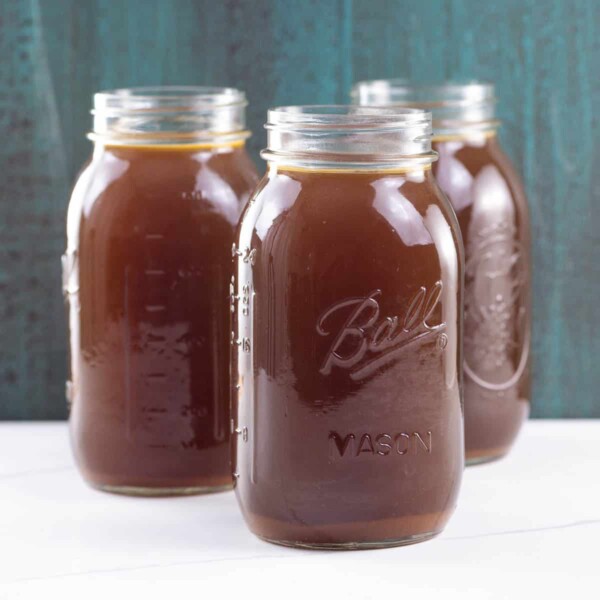
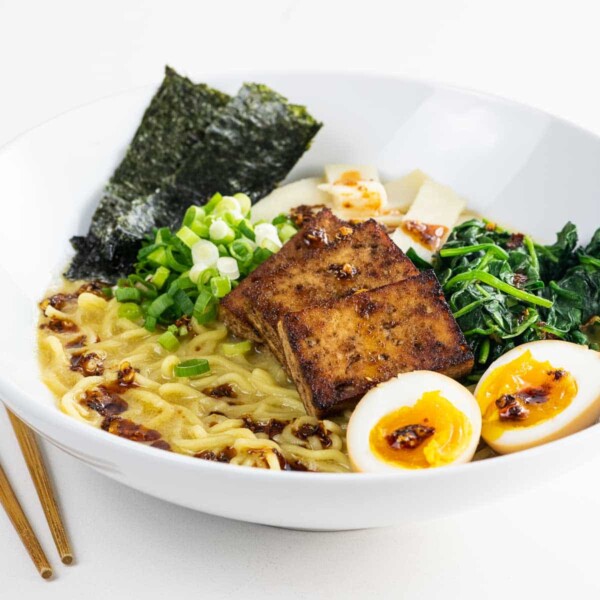







Carolyn, love your “brief” to all of us….
I think it interesting the apparent connection between the law and food – could it be the comonality of the torts? My son in law graduated from St Johns, majoring in history and Eng Lit, then planned to go the CIA and ultimately write about food – he’s quite amazing in both arenas.
Funny thing though, a few years post grad, he decided to bail on all those plans, enrolled at Touro full time, with an infant and one on the way, and came out the other side another member of the bar.
Interesting pattern, I just may have to ask my daughter, as sr majoring in lit and anthropology, and just threw on the poly sci minor for good measure this year….what this may all say about a new emerging culture.
Most of my lawyer friends, and it’s scary how many I have, are mostly also musicians, hmm…. but they’re all my age, so maybe it’s a generational thing.
AND……………..we are all like defendants here, awaiting a decision from our very own ALJ in the matter of The Pot!
Thanks for all the great comments, everyone!
Alison, I’ve noticed the same thing. The law-to-writing progression seems natural, but I’ve often wondered why the connection between law and cooking. It’s not just bloggers. Jeffrey Steingarten is a Harvard Law grad, Warren Brown (of Cake Love and Sugar Rush) was a lawyer, and several of the lawyers and staff at my former firm were former chefs, FCI grads, etc. (so the door swings both ways). Sorry you’re hating NYU. Feel free to email me if you want to talk.
Henry, those photos are amazing. I’ve been wanting to try foraging for a few years but haven’t made it yet. Maybe this year!
Caroline, bonito flakes are definitely worth the trouble. I don’t see a problem with eating the kombu, though, other than possibly passing out from joy. That could cut into your evening I guess.
Anu, I love garlic soup but have never tried Julia’s. Richard Olney’s recipe, which I found on 101 Cookbooks, is excellent, but there is—alas—no final liaison.
Jackie, thank you, you’re so sweet. Congratulations on your upcoming wedding!
Erica, I love Jerusalem artichokes and will try not to hold it against you that your farm is already giving you anything at all. Expect a recipe!
Stephen, that is a lovely story. I seriously hope you are planning to write something more than legal briefs at some point soon. Oh, and I’d like to edit the manuscript, please.
c’mon….how do you compete with that one?
(little dubious of the sheep though)
OK, this is becoming too much fun, you should let this run for a while…. can we go in the direction of creative novella writtings?
I for several months stayed at a friend’s farmhouse in the west of Scotland near the Firth of Clyde in the early 90s. It was a wonderful place, windswept and wild. My host, a recent widow in her mid 60s, still ran the farm, rearing sheep for the weaver as well as the butcher. I had some experience farming and I was happy to offer my labor. Despite being weary from what seemed like endless toil, she would find the time to prepare incredibly simple meals at the end of each day. One that remains with me is a fresh lamb stew with barley, carrot and potato simmered on stovetop in a simple, timeless and dented copper pot. I would like to take a shot at preparing that meal, replete with stories of the Picts, King Andrew’s Cross and Angus MacFergus, should I be so lucky to win your pot!
Tried your recipe in my old le creuset and it was awesome. But my food share keeps giving me Jerusalem artichokes, in case you need ideas for future posts! In terms of your pot, one could do worse than to make risotto from freshly picked wild mushrooms or else plantain soup.
Oh man – the first thing I would do is make a coq au vin. Holy cow – I would LOVE this pot.